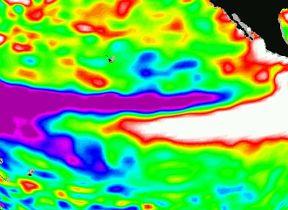Air mass modification
Air masses can become modified as they move away from their source region.
In its source region an air mass gains properties which are characteristic of the underlying surface. It may be cold or warm and it may be dry or moist.
The stability of the air can also be derived. In general, the more unstable an air mass is the more likely you are to experience unsettled weather such as wind or rain.
- Tropical air is unstable because it has been heated from below.
- Polar air is stable because it has been cooled from below.
As air moves from its source region the air is modified due to variations in the nature of the underlying surface. Two processes, acting either independently or together, may modify an air mass.
- An air mass moving over the sea is said to have a maritime track. This air mass will typically increase its moisture content, particularly in its lowest layers, by evaporation of water from the sea surface (as seen in the above diagram). On the other hand, an air mass moving over the land (with a continental track) will remain relatively dry.
- A cold air mass flowing away from its source region over a warmer surface will be warmed from below making the air more unstable in its lowest layers. A warm air mass flowing over a colder surface is cooled from below and becomes stable in its lowest layers. In its source region an air mass gains properties which are characteristic of the underlying surface. It may be cold or warm and it may be dry or moist.





